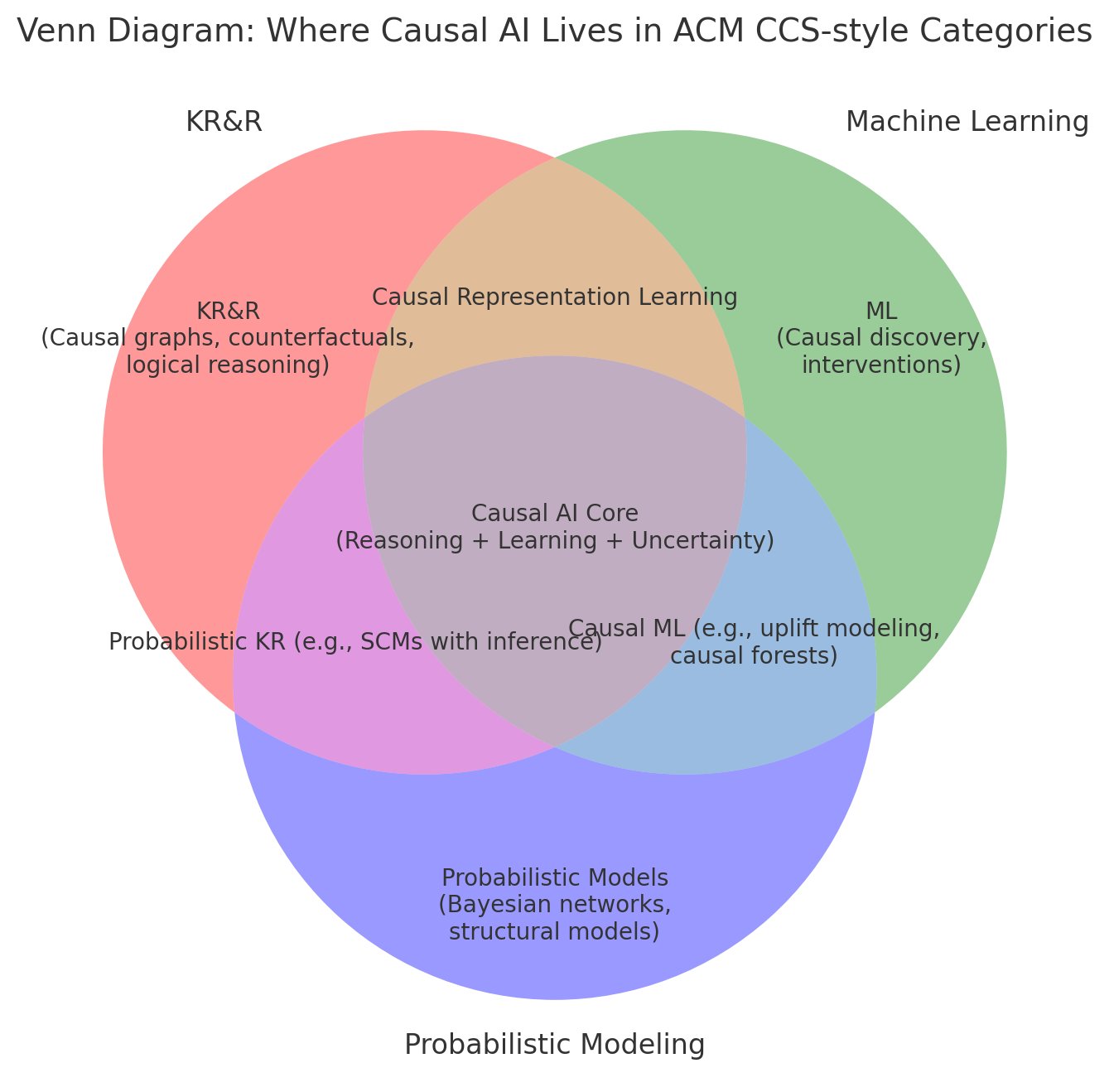🧭 Summary: Causal AI in ACM CCS-Style Categories #
🎯 Definition #
Causal AI refers to computational systems that model, reason, and learn about cause-effect relationships. This enables systems to simulate interventions (What if…?), explain outcomes, and support decision-making in uncertain, complex environments.
📚 ACM CCS-Style Categories Where Causal AI Lives #
1. Computing Methodologies → Artificial Intelligence → Knowledge Representation and Reasoning (KR&R) #
- Focus: Representing cause-effect relationships using logic, graphs, and symbolic formalisms.
- Examples:
- Structural Causal Models (SCMs)
- Counterfactual and abductive reasoning
- Causal rules, DAG-based inference
2. Computing Methodologies → Machine Learning #
- Focus: Learning causal structures or estimating treatment effects from data.
- Examples:
- Causal discovery algorithms
- Uplift modeling
- Counterfactual prediction
3. Computing Methodologies → Probabilistic Modeling #
- Focus: Encoding causal dependencies with uncertainty.
- Examples:
- Bayesian Networks
- Structural Equation Models (SEMs)
- Probabilistic programming for causal reasoning
🌀 Venn Diagram of Causal AI’s Interdisciplinary Nature #

🔁 Core Intersections #
| Overlap Zone | Meaning |
|---|---|
| KR&R ∩ ML | Causal Representation Learning: Learning latent causal graphs that support symbolic reasoning. |
| KR&R ∩ Probabilistic | Probabilistic KR: Encoding causal knowledge with uncertainty, e.g., SCMs with probabilistic inference. |
| ML ∩ Probabilistic | Causal Machine Learning: Estimating treatment effects, counterfactual prediction, causal forests. |
| KR&R ∩ ML ∩ Probabilistic | 🔁 Causal AI Core: Full integration — systems that can represent, learn, and reason under uncertainty. |
🧩 Takeaway #
Causal AI is not confined to a single ACM category. It is a cross-cutting area spanning:
- the representation power of KR&R,
- the learning ability of ML,
- and the uncertainty modeling of probabilistic systems.
This makes it central to trustworthy, explainable, and decision-supportive AI, especially in high-stakes fields like healthcare, economics, and law.